Decade in review: Why Microsoft's Surface Pro is the most important PC of the 2010s
Since 2013 Microsoft has been challenging the notion of a laptop. By 2019, the Surface Pro is now a part of our tech culture.
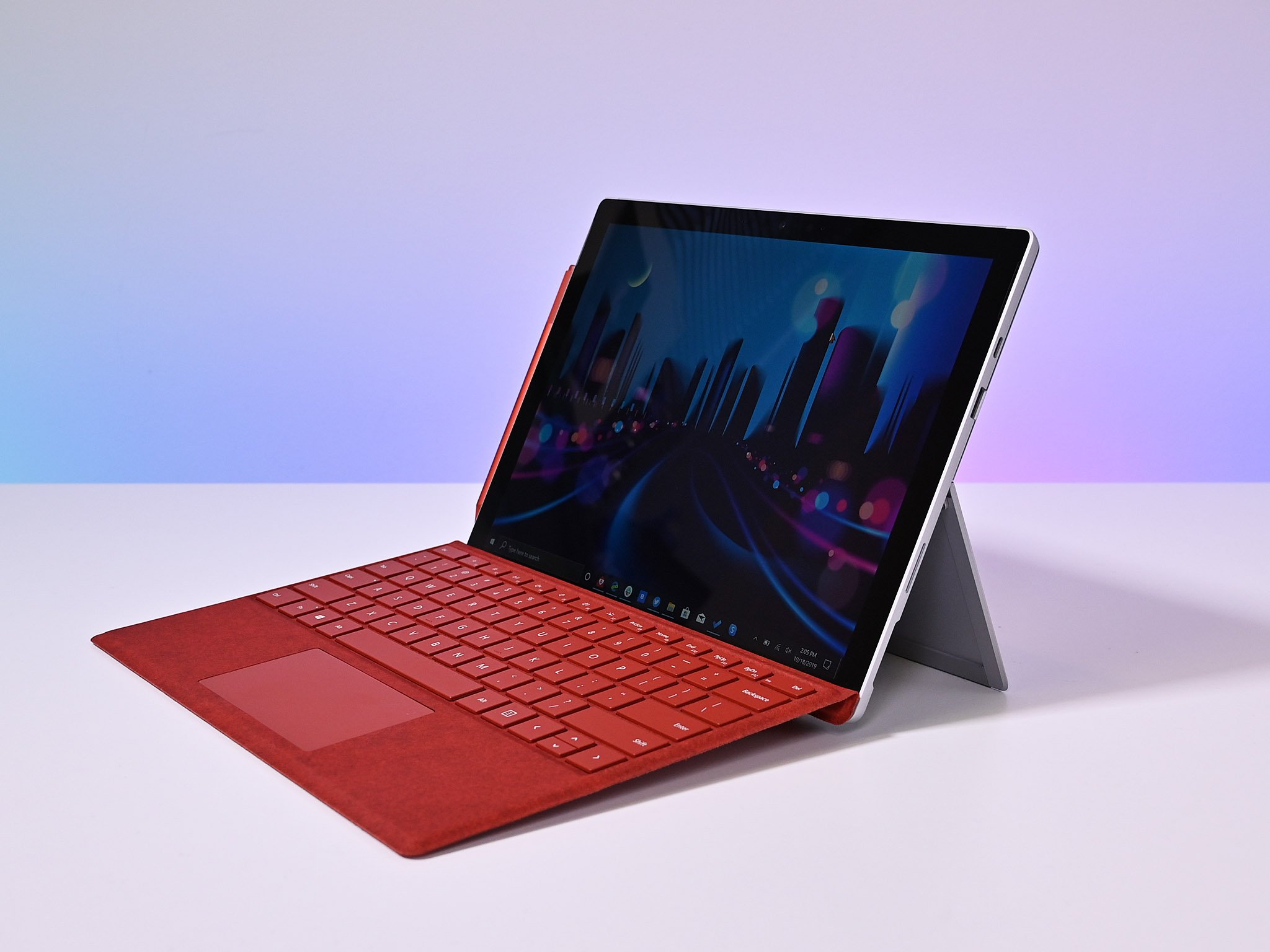
Microsoft's series of Surface Pro devices are our PC of the decade. Released during what many called the "post-PC era" of declining laptop sales, Microsoft kept pushing the concept until it finally resonated with audiences around 2015. It can also be credited with reinvigorating a stagnant industry keeping laptops not only relevant and exciting but keeping sales alive too.
Initially mocked, the Surface Pro has become the poster child for innovation and a dramatic rethinking of what a laptop could be for modern users. As we head into 2020, the design is so iconic that companies like Apple and Google are borrowing heavily from the model. The Surface Pro is now accepted as a legitimate alternative to the traditional laptop. It also solidified Microsoft's hardware ambitions and is the base for all future Surface hardware.
Here's a look back on why it is so awesome.
This won't work
Surface Pro: who is this for?
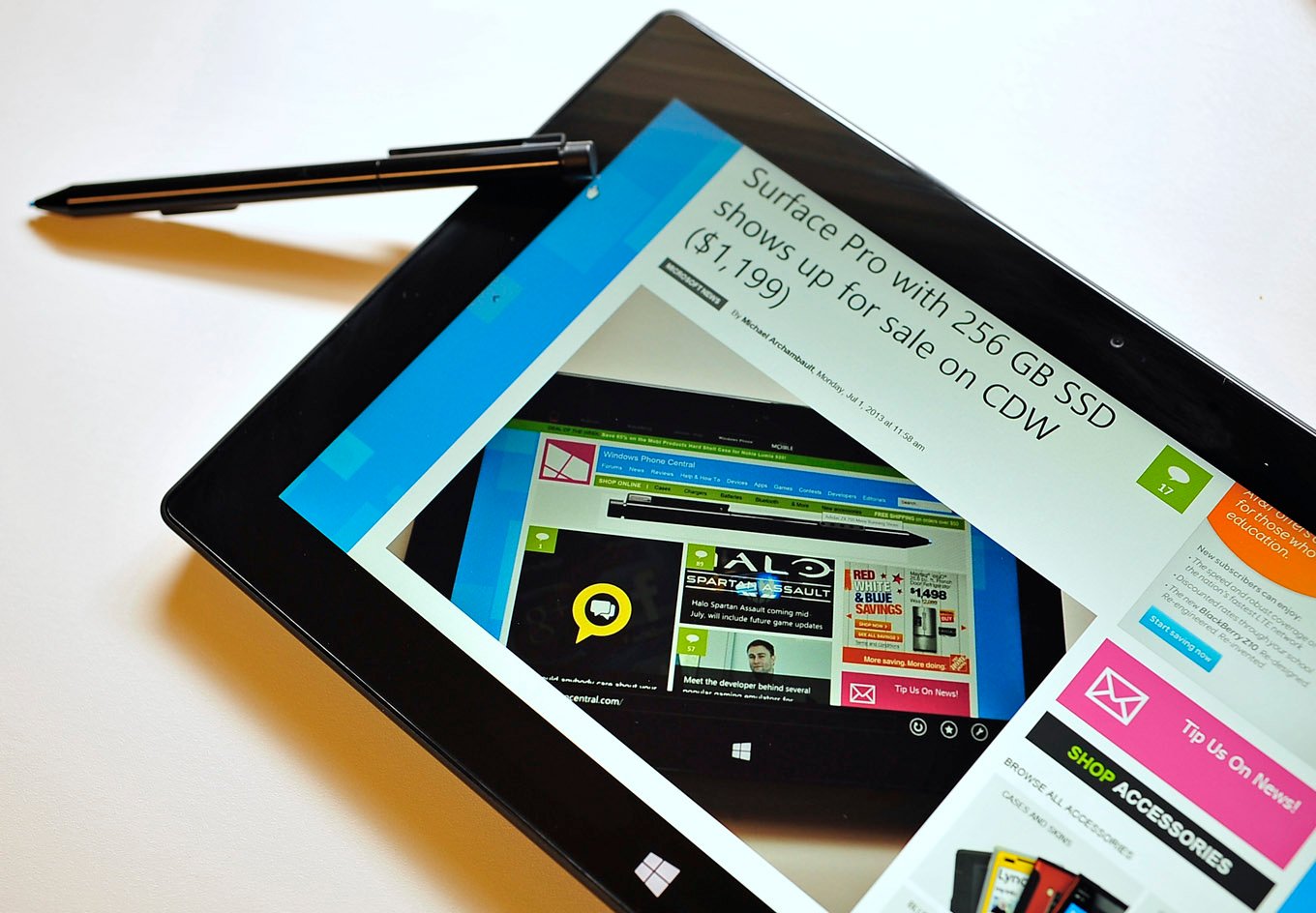
Back in 2012, Microsoft was coming off the successful Windows 7 desktop OS, and it intended to usher in the era of Windows 8 with new standard-setting hardware. Surface RT – and later Surface Pro – were those devices. The original Surface Pro came out on February 9, 2013.
Fun fact, in traditional Microsoft bad-naming talent, the Surface Pro was initially called "Surface for Windows 8 Pro".
Unfortunately, Windows 8 was received terribly, and while reviews for Surface Pro were mixed leaning towards positive the consensus often came back to one question: Who is this for?
Get the Windows Central Newsletter
All the latest news, reviews, and guides for Windows and Xbox diehards.
Horrendous battery life was also an early issue with reviews nailing it down between 3 and 5 hours. Then there were the other complaints like heat, noise, awkward "lapability," and limited to 4GB of RAM with 64GB of storage (only 23GB available) while priced at $899.
To the credit of many reviewers, many saw the potential of a Surface Pro, but it would take more hardware iterations to change the tide.
Tech media were still harsh on Microsoft's Surface ambitions, especially since Apple's iPad was destroying everything in its way. Apple's CEO Tim Cook famously referenced the Surface experiment suggesting Apple would never follow that route: "You can merge a toaster and a refrigerator, but that's probably not going to be pleasing to anyone."
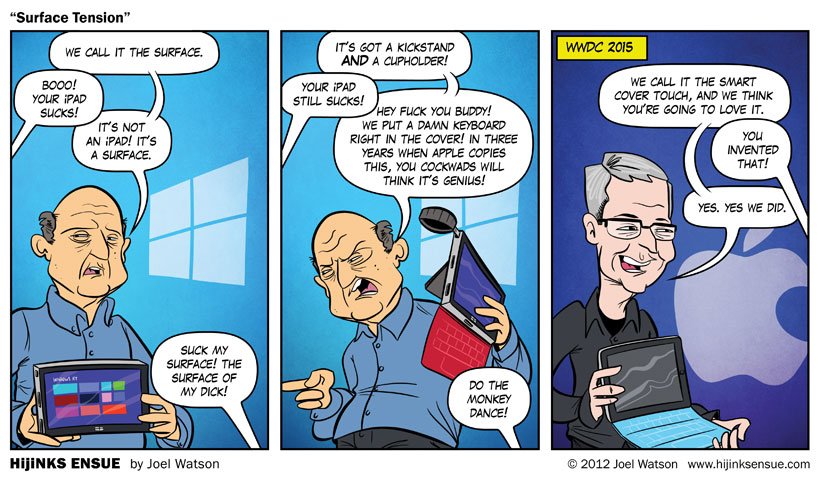
Some were savvier, like the comic artist Joel Watson, who predicted a different outcome for Apple. His now prescient comic from 2012 (above) correctly predicted how Apple would eventually mimic Microsoft taking credit for the design. Just three years later, in 2015, Apple announced the iPad Pro with a smart cover and keyboard combo, and it hasn't looked back.
And then there were sales, which were terrible and Surface did nothing to help Windows 8 (or was it vice versa?).
Microsoft eventually took a whopping $900 million write down, and while that is mostly attributable to the Surface RT line, it risked sullying the entire brand as people conflated the two. It was reported in 2013 that Microsoft spent more on advertising Windows 8 and the Surface then revenue collected on the fledgling PC.
Microsoft's OEM partners also loudly protested, potentially souring long-held relationships. "Microsoft poisons its partners" was one headline in 2012. Another reads "Surface: Microsoft, What the Hell is Wrong With You?". Yikes.
hitting its stride
Surface Pro 3 and Surface Pro 4 are tipping points
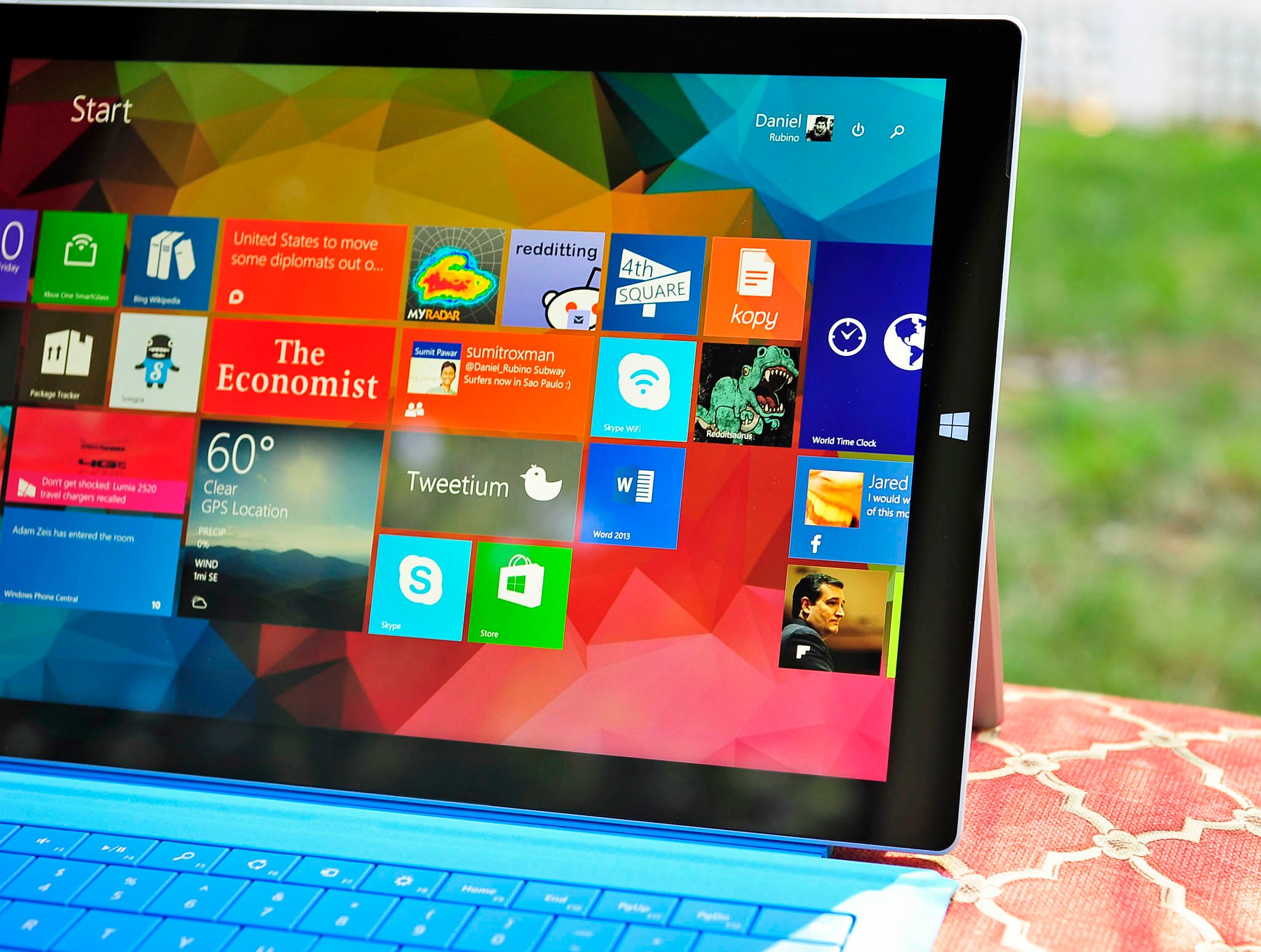
If you want to pinpoint the moment when the team behind Surface figured out what people wanted, it was June 20th, 2014. That's when Surface Pro 3 went on sale and with it a complete redesign to the Surface Pro we know today. As noted in my original review, the design adjustments from Surface Pro and Surface Pro 2 were substantial:
- 3:2 orientation (versus 16:9)
- 12-inch display (versus 10.6-inch)
- 2160 x 1440 display resolution (versus 1920 x 1080)
- Core i3 and Core i7 variants, in addition to Core i5 (only Core i5)
- Matte grey (versus black)
- N-trig pen (versus Wacom)
- 'Connected standby' (versus not supported)
Many of these are still the core features of the Surface Pro brand, especially that fan-favorite 3:2 aspect ratio.
A year later, with the release of the lower-cost Surface 3 in May 2015, Microsoft passed the $1 billion in Surface quarterly revenue for the first time.
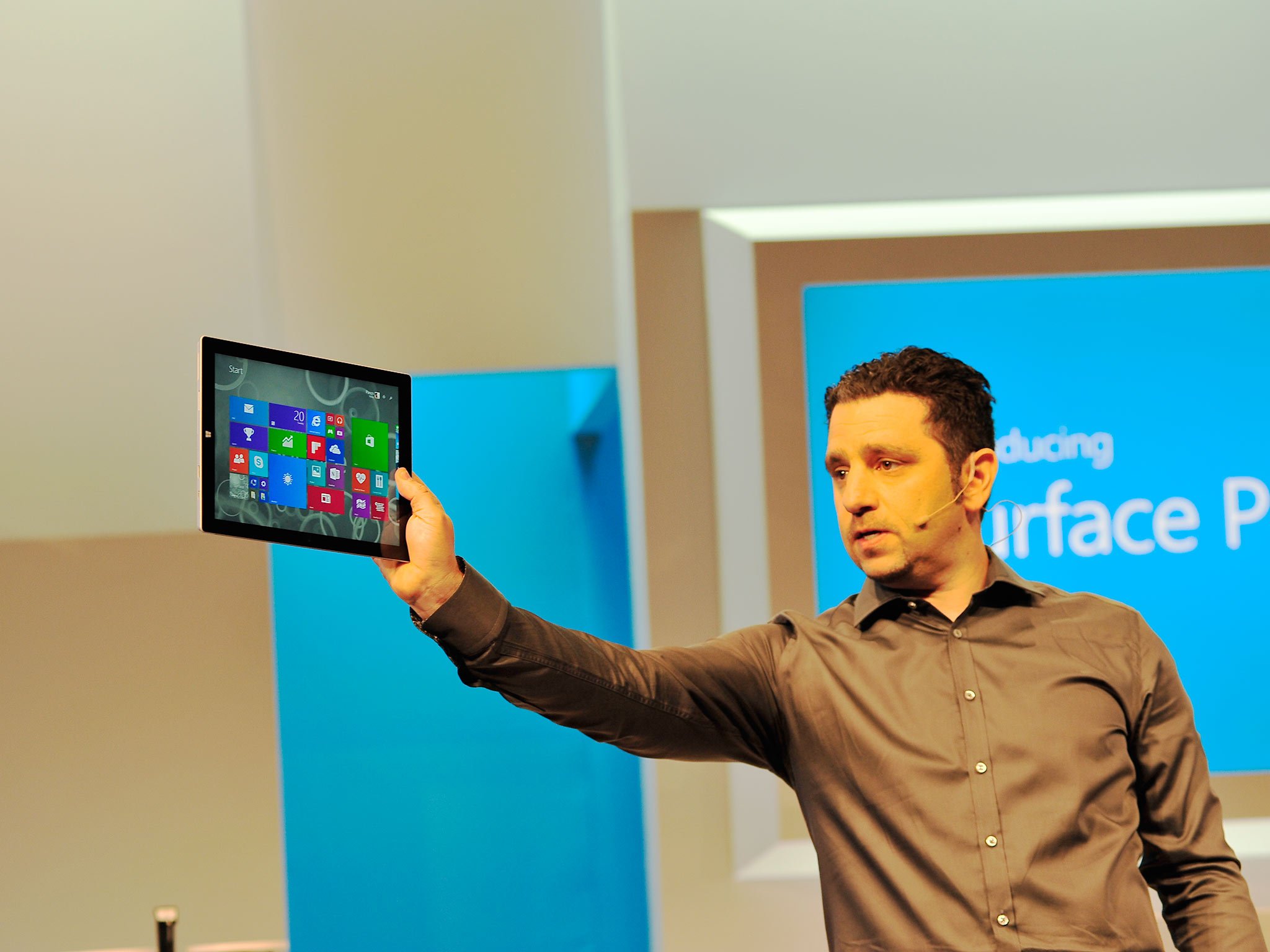
Surface Pro 4, which came out in October 2015 refined the Surface Pro 3. With a slightly larger display (now 12.3-inches), Windows Hello facial recognition, and faster PCIe storage, Surface Pro 4 would kick off its now-familiar "modest improvement upgrade cycle" for the Surface Pro series.
But perhaps the most significant fix was for the Surface Type Cover, which now had a larger trackpad and spread-out key design. I called it "the most notable change" of the release as it finally addressed one of the most criticized aspects of the Surface Pro: typing.
Later, in 2017, Microsoft would achieve another first: a true fanless Core i5 model.
Unfortunately, not all was perfect, though.
Hot bagging
Bumps, bruises, and new challengers
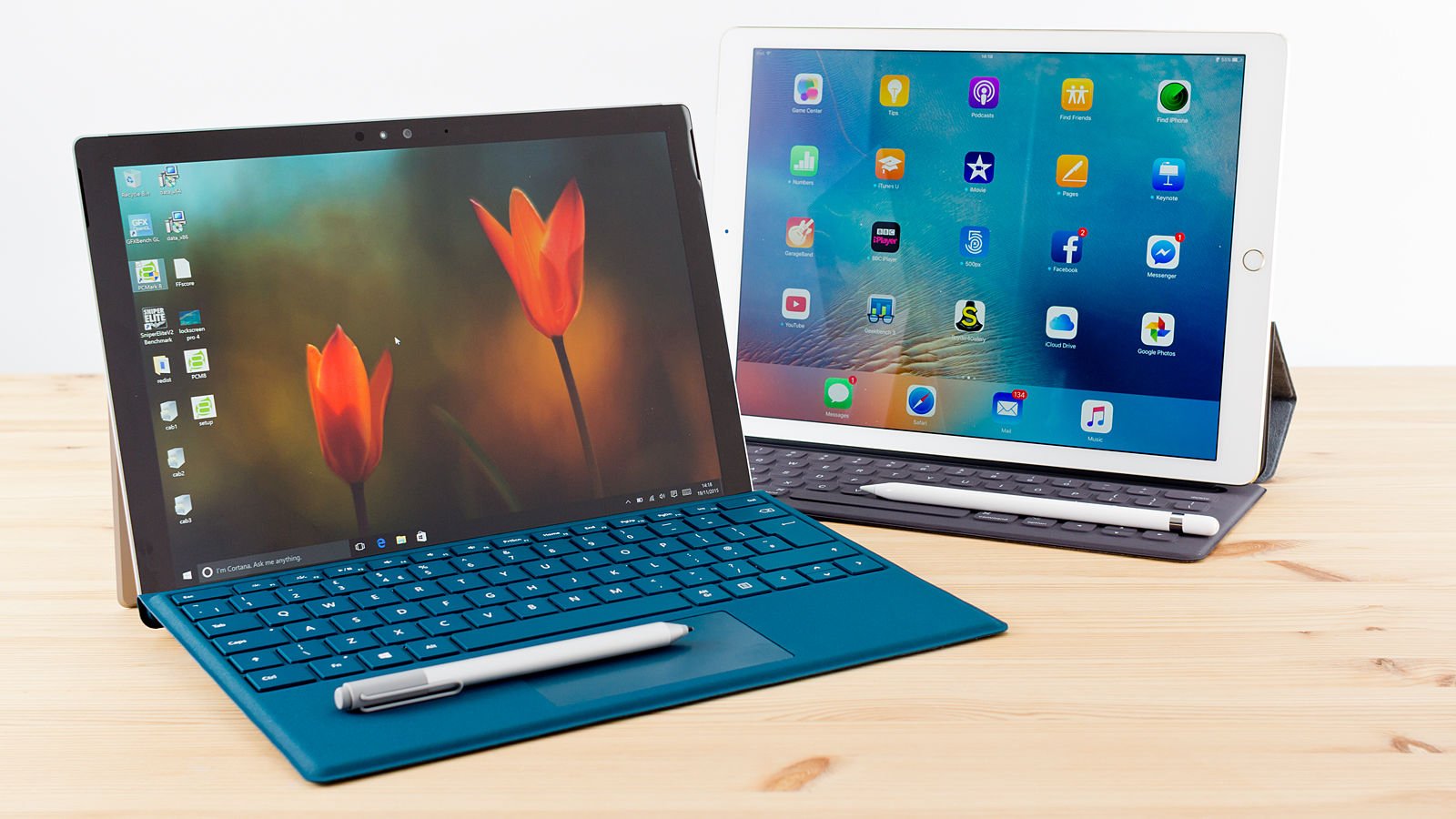
Not all was smooth sailing though following Surface Pro 4. Microsoft infamously had significant issues with the then-new Intel Skylake series of processors including massive battery drains.
Windows 10 was also buggy early on, which did not help. It was clear Microsoft pushed the release of Surface Pro 4 (and the new groundbreaking Surface Book) to be timed with the new OS. Under-baked drivers with a new OS was a recipe for disaster.
For a single Surface Pro generation in 2017, Microsoft tried to simplify its name to just Surface Pro instead of calling it Surface Pro 5. The company quickly reversed itself the following year in October 2018 with Surface Pro 6. Both had reports of battery degradation issues.
OEM partners eventually got acclimated to Microsoft's presence in hardware, but that friction reignited in 2015 with the "ultimate laptop" Surface Book (and later Performance Base). It happened again two years later with Surface Laptop an even more aggressive frontal assault on Ultrabooks.
By this time, Apple was doubling down on the iPad Pro with its infamous "What is a computer?" ad. Google tried (but failed miserably) with the Pixel Slate demonstrating that a good 2-in-1 is quite hard to make.
And while the 2019 Surface Pro 7 is mostly excellent – save for some reduced battery life – its evident iterative releases are getting stale, especially compared to the jaw-dropping design of the Surface Pro X.
A radical future
Surface Pro is iconic
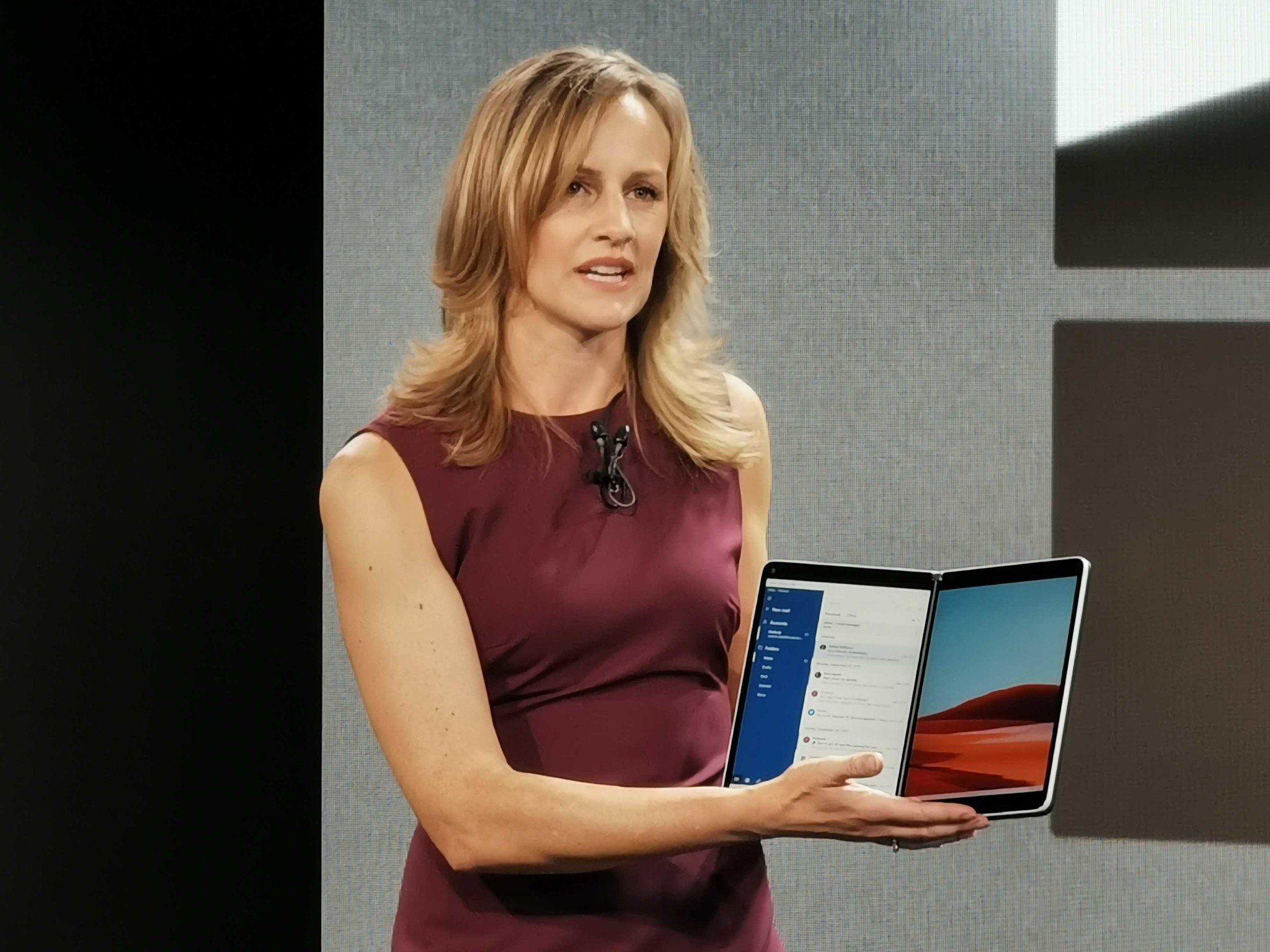
Surface Pro's design with a kickstand and keyboard cover forever transformed laptops and PCs. Companies like Dell, Lenovo, and HP all have "business editions" of similar 2-in-1 designs picking up Microsoft's slack in the enterprise. Even the wacky ASUS ROG Mothership borrows a similar model for an absolutely insane gaming rig.
Surface Pro is so iconic it now regularly shows up in cartoons like American Dad, and Pokémon. This point may seem silly, but for cartoons to work, whatever is shown must be easily identifiable. When you see something, you have to know what it is immediately. A design entering pop culture – whether cartoons, TV shows, or movies – is a sign of broader acceptance.

Microsoft still has more work to do with the Surface Pro – there can never be too much battery or processing power – but the overall concept is here to stay. Surface Pro X is an offshoot pushing mobility even further. And the forthcoming dual-screen Surface Neo is an even more radical theory of mobile computing that is about to kick off the next decade.
For all its struggles and people calling for its demise, the Surface Pro is proof that good ideas – over time – can become a winner.
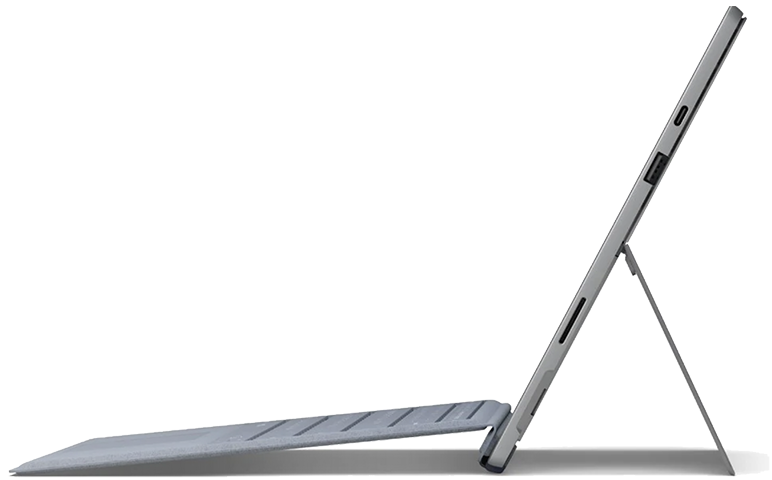
Type-C and 10th Gen Intel are game-changers
Microsoft has finally added a loaded-out USB Type-C port to the Surface Pro 7. When combined with Intel's latest 10th Gen processor and GPU, this year's Core i5 blows away last year's Core i7 all without a fan. Minor tweaks to the RAM, going to Intel for Wi-Fi 6, and Instant On ability make this Surface Pro 7 an absolute joy to use.
Here's more on how Microsoft, Apple, and Google dominated the 2010s.
- Microsoft
- Apple

Daniel Rubino is the Editor-in-chief of Windows Central. He is also the head reviewer, podcast co-host, and analyst. He has been covering Microsoft since 2007 when this site was called WMExperts (and later Windows Phone Central). His interests include Windows, laptops, next-gen computing, and wearable tech. He has reviewed laptops for over 10 years and is particularly fond of 2-in-1 convertibles, Arm64 processors, new form factors, and thin-and-light PCs. Before all this tech stuff, he worked on a Ph.D. in linguistics, performed polysomnographs in NYC, and was a motion-picture operator for 17 years.
